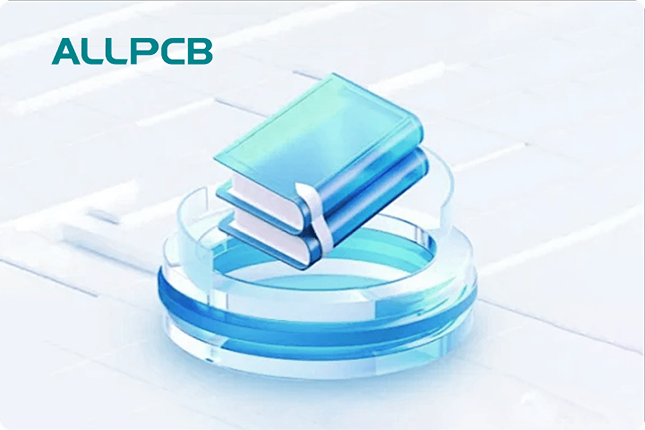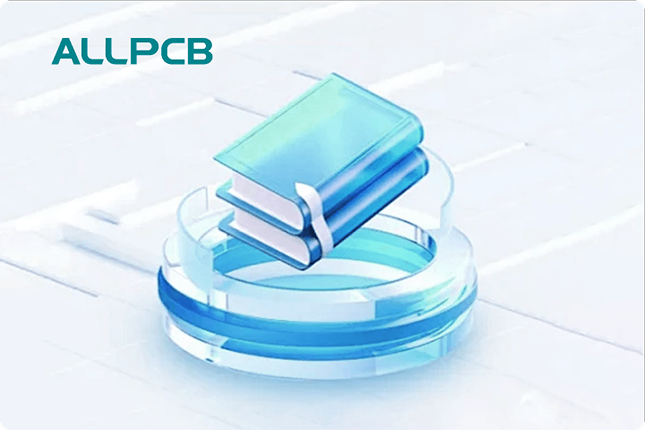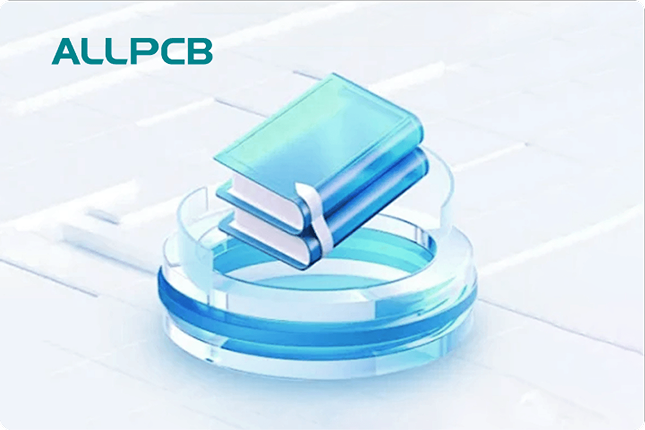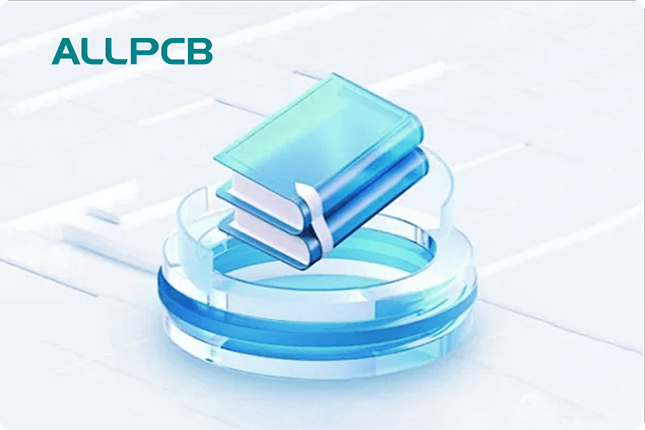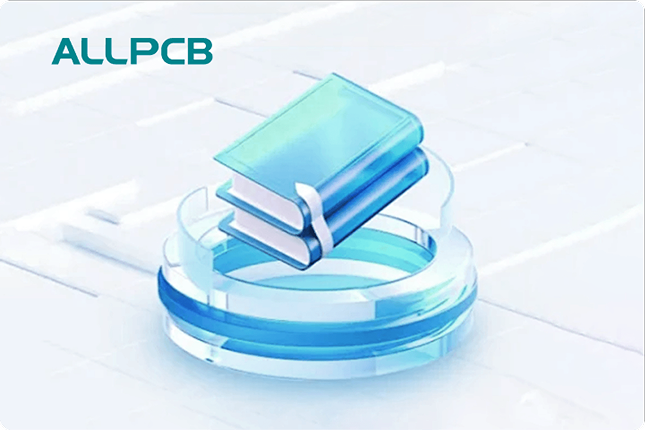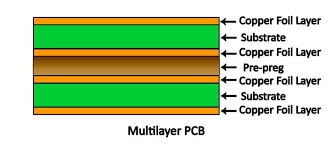When choosing between FR-4 and Rogers PCB materials, the decision often comes down to cost versus performance. FR-4 is the go-to choice for most general-purpose electronics due to its affordability and versatility, costing around $0.50 to $1.50 per square inch for standard designs. However, it struggles in high-frequency or high-speed applications due to signal loss and poor dielectric properties. Rogers PCB materials, while significantly more expensive at $5 to $15 per square inch, offer superior performance with low signal loss and excellent thermal stability, making them ideal for RF, microwave, and 5G applications. If your project demands high-speed signal integrity or operates in extreme conditions, splurging on Rogers is often worth the investment.
In this detailed guide, we’ll break down the differences between FR-4 and Rogers PCB materials, focusing on cost, advantages, disadvantages, and specific use cases. Whether you're designing a simple consumer gadget or a complex high-speed system, this comparison will help you decide when to stick with budget-friendly FR-4 and when to invest in premium Rogers materials for top-tier performance.
Understanding PCB Materials: Why They Matter
Printed Circuit Boards (PCBs) are the backbone of modern electronics, and the material used in their construction plays a critical role in determining performance, reliability, and cost. The substrate material affects how signals travel through the board, how much heat it can handle, and how well it holds up in different environments. Two of the most common materials are FR-4 and Rogers, each with unique properties that make them suitable for different applications.
Choosing the right material isn’t just a technical decision—it’s a balance of budget and project requirements. Let’s dive into the specifics of FR-4 and Rogers to see how they compare, especially when it comes to cost, performance in high-speed designs, and their respective strengths and limitations.
What Is FR-4 PCB Material?
FR-4 is the most widely used PCB material in the industry. It’s a composite made of woven fiberglass cloth and an epoxy resin binder, offering a good mix of strength, durability, and affordability. The "FR" stands for "Flame Retardant," meaning it’s designed to resist catching fire, which is critical for safety in electronics.
FR-4 is often the default choice for many applications because it’s cost-effective and works well for standard designs. Its dielectric constant (Dk) typically ranges from 4.2 to 4.8 at 1 MHz, which is acceptable for low to medium-frequency circuits. It also has a decent thermal resistance, with a glass transition temperature (Tg) of around 130°C to 140°C for standard FR-4, though high-Tg variants can reach up to 170°C.
Advantages of FR-4 PCB
- Low Cost: FR-4 is incredibly budget-friendly, often costing between $0.50 and $1.50 per square inch for standard boards. This makes it ideal for mass production and projects with tight budgets.
- Versatility: It supports a wide range of applications, from simple consumer electronics like calculators to more complex devices like computer motherboards.
- Good Mechanical Strength: The fiberglass structure provides durability, making FR-4 boards resistant to physical stress during manufacturing and use.
- Flame Resistance: Its flame-retardant properties meet safety standards for most electronic devices.
FR-4 PCB Limitations
Despite its popularity, FR-4 has significant drawbacks, especially in high-performance scenarios. These limitations often push engineers toward alternative materials like Rogers for demanding applications.
- Poor High-Frequency Performance: FR-4 has a higher dissipation factor (Df) of around 0.02 at 1 GHz, leading to greater signal loss in high-frequency designs. This makes it unsuitable for RF or microwave applications above 1-2 GHz.
- Dielectric Variability: The dielectric constant of FR-4 can vary across the board, causing impedance mismatches in high-speed circuits where signal integrity is critical.
- Limited Thermal Management: While FR-4 handles moderate heat, it struggles in environments with extreme temperatures or rapid thermal cycling, risking delamination or cracking.
- Moisture Absorption: FR-4 absorbs moisture more readily than advanced materials, which can degrade performance in humid conditions.
What Is Rogers PCB Material?
Rogers PCB materials are high-performance substrates designed for applications where signal integrity, thermal stability, and low loss are non-negotiable. Unlike FR-4, Rogers materials are often based on ceramic-filled PTFE (Polytetrafluoroethylene) or other specialized composites, offering exceptional electrical and thermal properties. They are widely used in industries like telecommunications, aerospace, and automotive for high-speed and high-frequency designs.
Rogers materials come in various series, such as RO4000 and RO3000, each tailored for specific needs. For instance, RO4350B has a dielectric constant of 3.48 at 10 GHz and a dissipation factor as low as 0.0037, making it perfect for RF and microwave circuits.
Advantages of Rogers PCB
- Superior High-Frequency Performance: Rogers materials have a low dissipation factor (often below 0.004 at 10 GHz), minimizing signal loss in high-speed and RF applications like 5G antennas and radar systems.
- Stable Dielectric Properties: With a consistent dielectric constant across frequencies, Rogers ensures reliable impedance control, critical for high-speed digital circuits operating at 10 Gbps or higher.
- Excellent Thermal Stability: Rogers materials can withstand temperatures up to 280°C without degrading, making them suitable for harsh environments.
- Low Moisture Absorption: Unlike FR-4, Rogers resists moisture, maintaining performance in humid or outdoor settings.
Disadvantages of Rogers PCB
- High Cost: Rogers materials are expensive, often ranging from $5 to $15 per square inch, depending on the specific type and thickness. This can be a dealbreaker for cost-sensitive projects.
- Complex Manufacturing: Working with Rogers requires specialized equipment and expertise, which can increase production time and cost.
- Not Ideal for General Use: For low-frequency or non-critical designs, Rogers is overkill, adding unnecessary expense without tangible benefits.
Rogers PCB vs. FR-4 Cost: Breaking Down the Numbers
One of the most significant factors in choosing between FR-4 and Rogers is cost. FR-4 is the clear winner for budget-conscious projects, with prices typically between $0.50 and $1.50 per square inch for standard 1.6mm thick, double-layer boards. Even for more complex multilayer designs, FR-4 remains affordable, rarely exceeding $3 per square inch.
In contrast, Rogers PCB materials start at around $5 per square inch for basic configurations and can go as high as $15 or more for specialized grades or thicker boards. This price difference becomes even more pronounced in large-scale production, where the cost of Rogers can quickly add up. For example, a 100-square-inch board in FR-4 might cost $100 to $150, while the same size in Rogers could set you back $500 to $1,500.
However, cost isn’t just about raw material price. Rogers can reduce long-term expenses in high-performance applications by minimizing signal issues and improving reliability, potentially saving on redesigns or failures in the field. For projects where performance is critical, the upfront investment in Rogers often pays off.
High-Speed PCB Materials Comparison: Performance Metrics
When it comes to high-speed designs, material choice directly impacts signal integrity, speed, and reliability. Let’s compare FR-4 and Rogers based on key performance metrics relevant to high-speed and high-frequency applications.
- Dielectric Constant (Dk): FR-4 has a Dk of 4.2-4.8 at 1 MHz, which varies with frequency and can cause impedance issues. Rogers offers a lower and more stable Dk, often around 3.0-3.5 up to 10 GHz, ensuring consistent signal performance.
- Dissipation Factor (Df): FR-4’s Df of 0.02 at 1 GHz leads to noticeable signal loss in high-frequency designs. Rogers, with a Df as low as 0.002-0.004 at 10 GHz, preserves signal strength, making it ideal for speeds above 5 Gbps.
- Thermal Conductivity: FR-4 has a thermal conductivity of about 0.3 W/m·K, limiting its heat dissipation. Rogers materials often exceed 0.5 W/m·K, better managing heat in high-power applications.
- Frequency Range: FR-4 is practical up to 1-2 GHz before signal degradation becomes significant. Rogers excels beyond 10 GHz, supporting cutting-edge technologies like 5G and satellite communications.
For high-speed PCB designs, such as those in data centers or automotive radar, Rogers is the better choice due to its ability to maintain signal integrity at speeds exceeding 10 Gbps. FR-4, while sufficient for lower-speed applications like basic microcontrollers, falls short when precision and minimal loss are required.
When to Choose FR-4: Sticking to the Basics
FR-4 is the right choice for a wide range of applications where cost and simplicity take precedence over high-end performance. Consider using FR-4 if:
- Your design operates at low to medium frequencies (below 1 GHz).
- Signal integrity and speed are not critical, such as in basic power supplies or LED lighting.
- Budget constraints are a primary concern, especially for large-volume production.
- Environmental conditions are mild, with no extreme heat or humidity.
For example, FR-4 is perfect for consumer electronics like remote controls, calculators, or basic IoT devices. Its affordability and ease of manufacturing make it a staple in the industry for non-specialized projects.
When to Splurge on Rogers: Prioritizing Performance
Rogers PCB materials are worth the investment when performance cannot be compromised. Opt for Rogers if:
- Your project involves high-frequency signals (above 2 GHz) or high-speed data rates (above 5 Gbps).
- Signal integrity is critical, as in RF circuits, microwave systems, or 5G infrastructure.
- The application requires thermal stability in extreme conditions, such as aerospace or automotive electronics.
- Moisture resistance is necessary for outdoor or humid environments.
For instance, Rogers materials are commonly used in base station antennas for 5G networks, where low signal loss at frequencies up to 28 GHz is essential. Similarly, in automotive radar systems operating at 77 GHz, Rogers ensures reliable performance under varying temperatures and conditions.
Making the Right Choice for Your Project
Deciding between FR-4 and Rogers PCB materials depends on a clear understanding of your project’s needs. Start by evaluating the frequency range and speed requirements of your design. If you’re working on a high-speed or high-frequency application, Rogers is likely the better option despite its cost. For standard electronics with no special performance demands, FR-4 offers a practical and economical solution.
Also, consider the environment in which your PCB will operate. Harsh conditions like extreme heat, rapid temperature changes, or high humidity favor Rogers due to its superior stability. Finally, factor in your budget. While Rogers is expensive upfront, it can save costs in the long run by reducing failures and redesigns in critical applications.
By weighing these factors—cost, performance, and environmental needs—you can make an informed decision that balances quality and affordability. Whether you choose the reliable, budget-friendly FR-4 or the high-performing Rogers, selecting the right material ensures your PCB design meets its intended purpose without unnecessary expense or compromise.
Conclusion: Balancing Cost and Performance
In the debate of FR-4 vs. Rogers PCB, there’s no one-size-fits-all answer. FR-4 shines in cost-sensitive, general-purpose applications, offering a reliable and affordable solution for everyday electronics. However, its limitations in high-frequency performance and thermal management make it unsuitable for advanced designs. Rogers, with its exceptional signal integrity, thermal stability, and low loss, is the premium choice for high-speed and RF applications, justifying its higher cost when performance is paramount.
Understanding the trade-offs between cost and capability is key to choosing the right material. For engineers and designers, the decision to splurge on Rogers often comes down to whether the project’s demands—be it speed, frequency, or environmental resilience—outweigh budget constraints. With this guide, you’re equipped to make a choice that aligns with your technical and financial goals, ensuring your PCB performs exactly as needed.
 ALLPCB
ALLPCB


